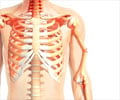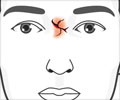Research published in the New England Journal of Medicine gives that an annual infusion of Novartis AG's Reclast after a mild hip fracture not only helps prevent another broken bone, it prolongs life in elderly patients as well.
These findings are expected to boost sales of the drug. Reclast generated almost $1.3 billion in 2006 under the name Zometa for treating cancer that had spread to the bone. U.S. regulators approved Reclast last month for postmenopausal women with osteoporosis.In America, about 300,000 persons experience hip fractures each year, doubling their risk of breaking another bone and boosting their chances of dying within the next two years. In spite of numerous drugs to strengthen bones, many elderly patients do not receive such treatment or fail to regularly take their medication.
Say pharmacists Karim Anton Calis and Frank Pucino from the National Institutes of Health: ``The reduction in fracture incidence and death was striking and clearly establishes the need for pharmacologic intervention in patients who fracture a hip. "No other controlled clinical trial has previously shown efficacy of any osteoporosis medication for reducing the recurrence of fracture in patients who already had broken a hip", they added.
The results of the study, funded by Novartis, Switzerland were also presented yesterday at the American Society of Bone and Mineral Research's annual meeting in Hawaii.
In the study, 1,065 patients were given a 15-minute intravenous infusion of Reclast, within three months of surgery to repair a broken hip. It was then given once a year, afterwards. Another 1,062 patients were given a placebo injection. Both groups received vitamin D and calcium and were able to take other bone-building drugs.
New fractures developed in 8.6 percent of those given Reclast, compared with 13.9 percent of those on a placebo. After an average of about 2 years, 9.6 percent of the Reclast patients had died, compared with 13.3 percent of placebo patients.
Advertisement
About 10 million Americans have osteoporosis, characterized by weak and brittle bones. About half of women over age 50 will have a broken bone because of osteoporosis, according to the National Institutes of Health and the National Osteoporosis Foundation.
Advertisement
Source-Medindia
ANN/C











